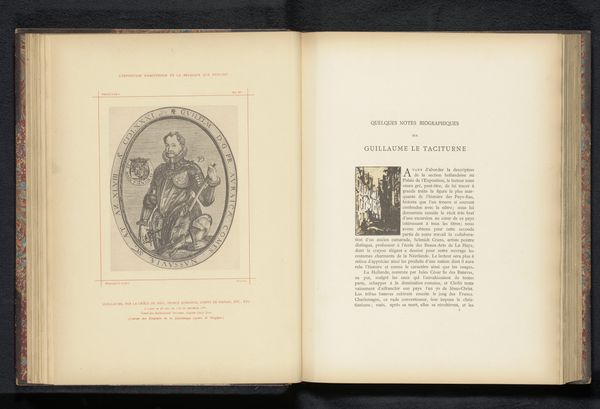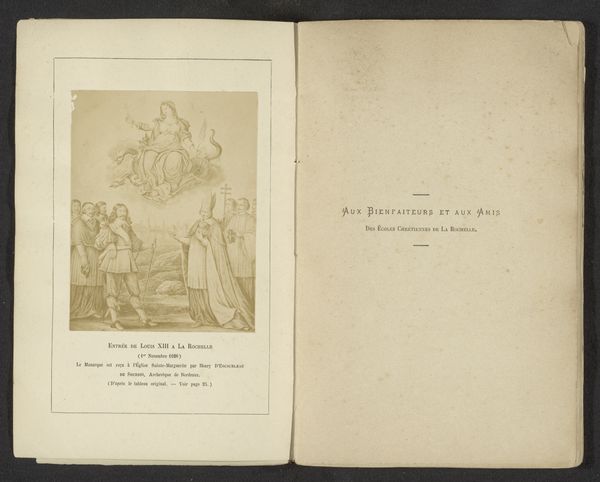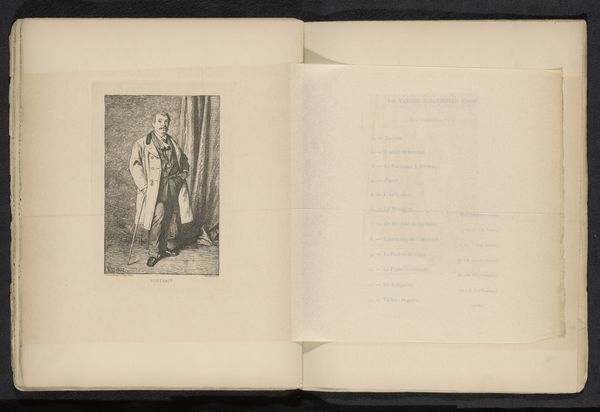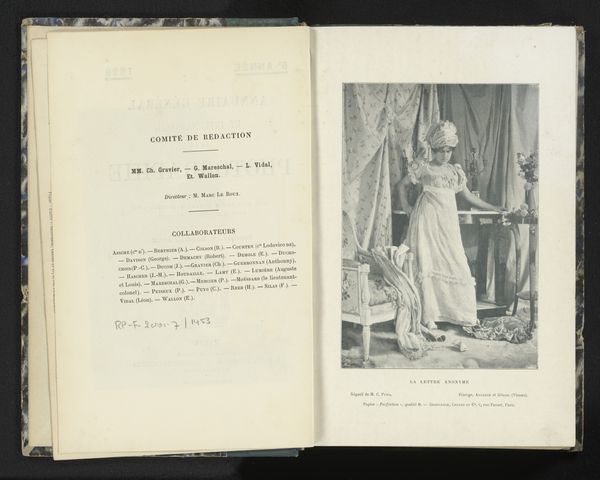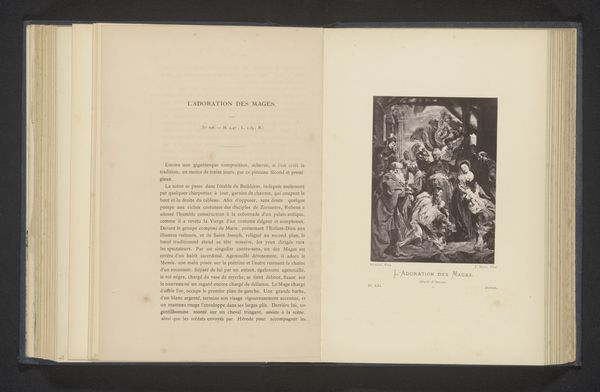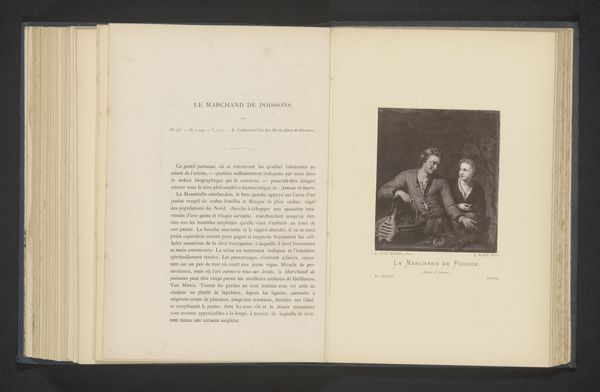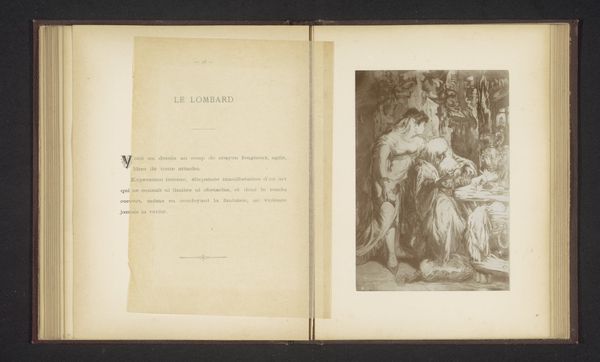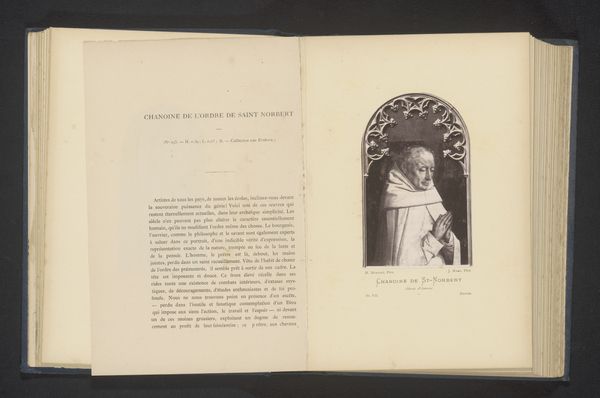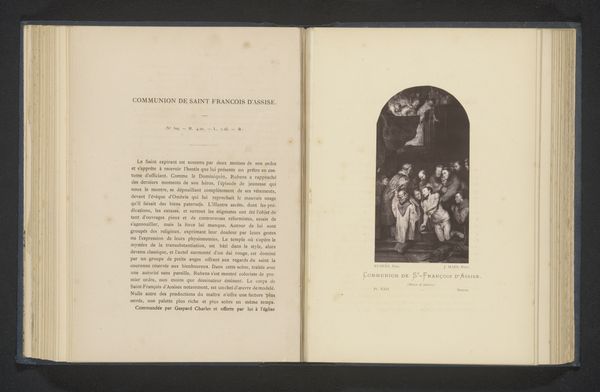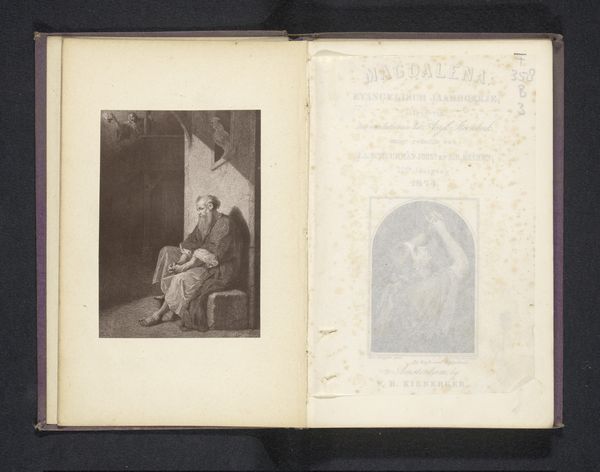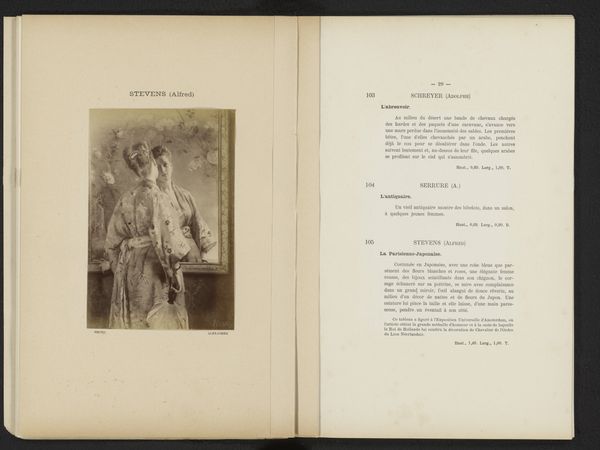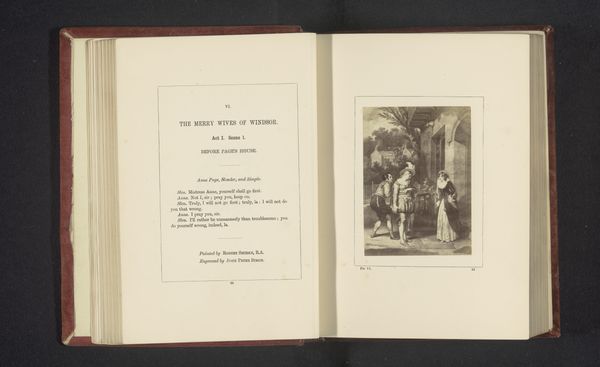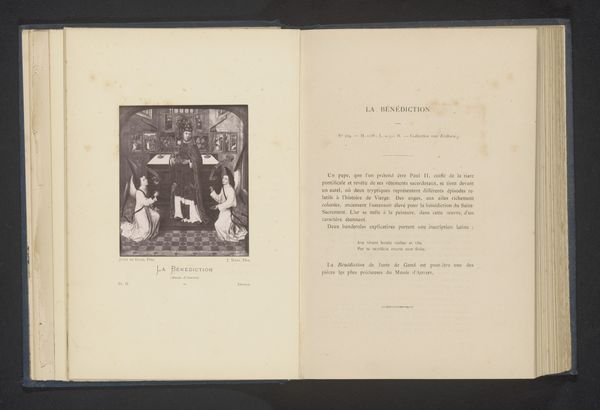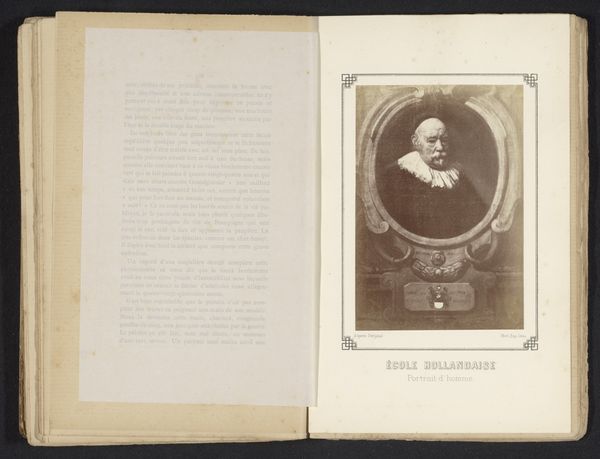
Fotoreproductie van het schilderij Saint Sébastien et sainte Apolline door Pietro Perugino before 1879
0:00
0:00
print, photography
#
portrait
# print
#
photography
#
coloured pencil
#
ancient-mediterranean
#
italian-renaissance
Dimensions: height 140 mm, width 78 mm
Copyright: Rijks Museum: Open Domain
Editor: This is a photographic reproduction, made before 1879 by E. Léon, of Perugino’s painting "Saint Sebastian and Saint Apollonia." What strikes me is the photographic medium used to represent a Renaissance painting; it is so different from our modern high-resolution scans. I wonder, what's most interesting to you about this image? Curator: I am interested in the labor involved in its production and its social context. Think about the process: someone had to meticulously photograph the painting, then create this print. Photography at this time was a complex and laborious chemical process, sharply contrasting the directness of painting. This makes one question how image production impacts the distribution of, and access to, Renaissance ideals of beauty. Editor: So, it's less about the artistic merit of the original painting and more about the act of reproduction itself? Curator: Exactly. This photograph flattens the original's texture and brushwork, offering a standardized and reproducible version of art. How did it alter access and interpretation, both enabling the democratization of images, and cheapening or otherwise transforming the status and role of painting in the second half of the 19th century? Did photographic reproduction allow this artwork to reach a wider audience, or transform Perugino’s creative act into industrial manufacture? Editor: That's a fascinating point! It changes the meaning and experience of art by making it more widely accessible, but possibly reducing its artistic impact. I never considered that the means of distribution had such a role in the piece's overall meaning. Curator: Indeed! Understanding how art is materially produced and distributed provides vital insights into the dynamics of cultural power and value. It reshapes how we experience the "original" painting itself.
Comments
No comments
Be the first to comment and join the conversation on the ultimate creative platform.
